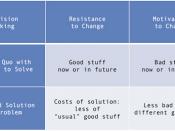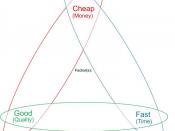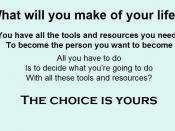Individual Tools and Techniques
Introduction
Making any decision is never easy. It requires an organized thought process and critical thinking at its very finest to achieve the desired results. Decision-making is so complex in nature and there are many tools and techniques to come up with a good decision. After all, different scenarios require different decision-making techniques. For the example below, which the recent question was "Should I accept a project coordinator's position out of state?" the best and most obvious decision-making tool was "PMI".
PMI
PMI, which stand for 'Plus/Minus/Implications' is the enhanced version of the old-fashioned 'weighing pros and cons' technique. The "I" can also stand for "Interesting" weighing factors about the question at hand. The difference between simply making a pros and cons list is each pro and con receives a numbered "score", which are added together once the list has been completed. The added benefit of adding a numerical value to each plus and minus is I make the decision regarding what is more important on my list.
To use PMI, draw up a table headed up with: 'Plus', 'Minus', and 'Implications'. In the column underneath 'Plus', write down all the positive results of taking the action. Underneath 'Minus', write down all the negative effects [of taking the action]. In the 'Implications' column write down the implications and possible outcomes of taking the action, whether positive or negative" (Manktelow, 2005).
Although an idea may seem like a good one at first, it may not be after considering all of the factors involved in the outcome and consequence. Last year, I had a situation arise where I was considering applying for a project coordinator position in Atlanta, GA. Instead of jumping at the opportunity to apply for the position, I weighed my pros and cons in the...


